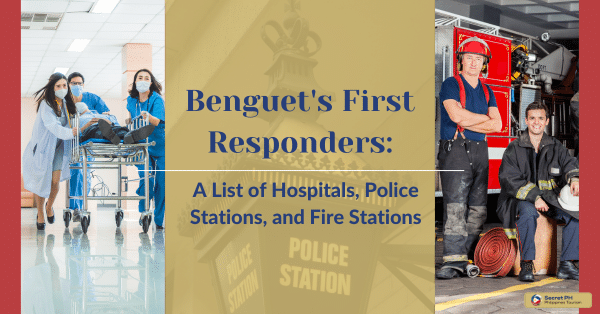Transportation providers are vital in emergency response in the Philippines. With the country’s geography and susceptibility to natural disasters, efficient transport is crucial in saving lives and providing aid. Land, air, and sea transport all have unique roles. Despite challenges such as limited resources and inadequate infrastructure, innovations and improvements enhance transportation providers’ capabilities.
This article examines the roles of various Philippine transportation providers in emergency situations and identifies some of the challenges they face in providing an effective response. It also explores some of the innovative approaches and improvements made to transportation to support emergency responses.
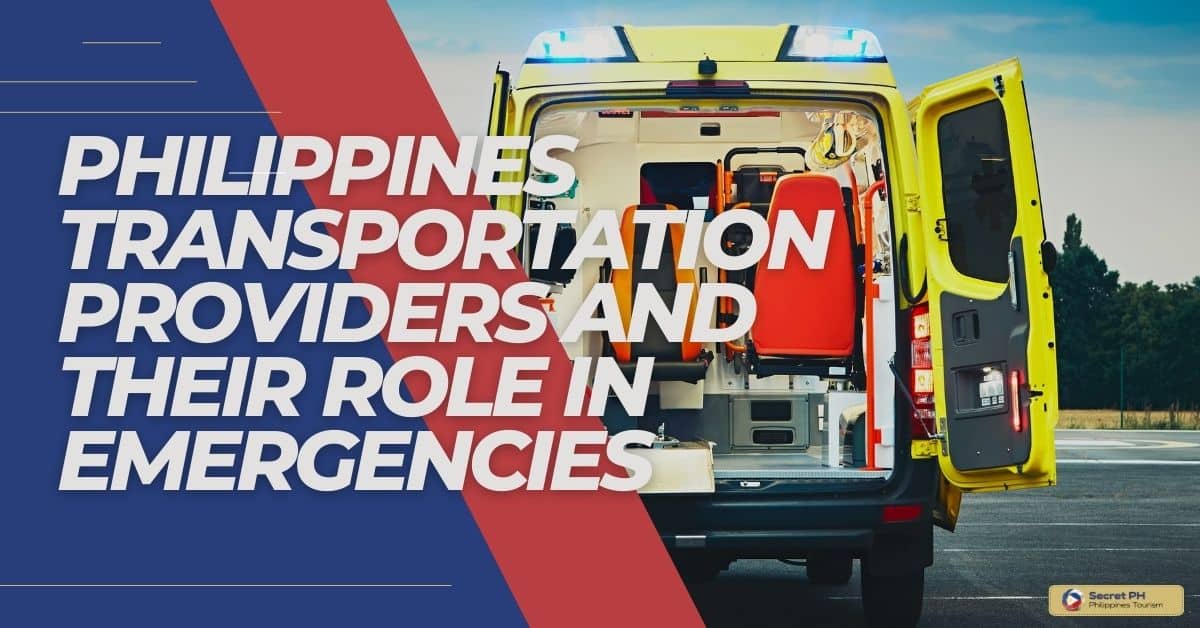
Importance of Transportation Providers in Emergencies
Transportation providers play a crucial role in emergency response in the Philippines. During times of crisis, such as natural disasters or pandemics, transportation providers are responsible for ensuring that essential goods and services are delivered to affected communities.
This includes transporting medical personnel and supplies, food and water, and emergency equipment. Without efficient and reliable transportation, emergency response efforts can be severely hampered, and lives may be lost.
Moreover, transportation providers are also instrumental in the evacuation of affected communities to safe areas. In cases of extreme weather events or other emergencies that require immediate evacuation.
Transportation providers are responsible for ensuring the safe and timely movement of people to designated shelters or other secure locations. The timely and effective movement of people and goods is crucial in mitigating the impact of emergencies and reducing the loss of life and property.
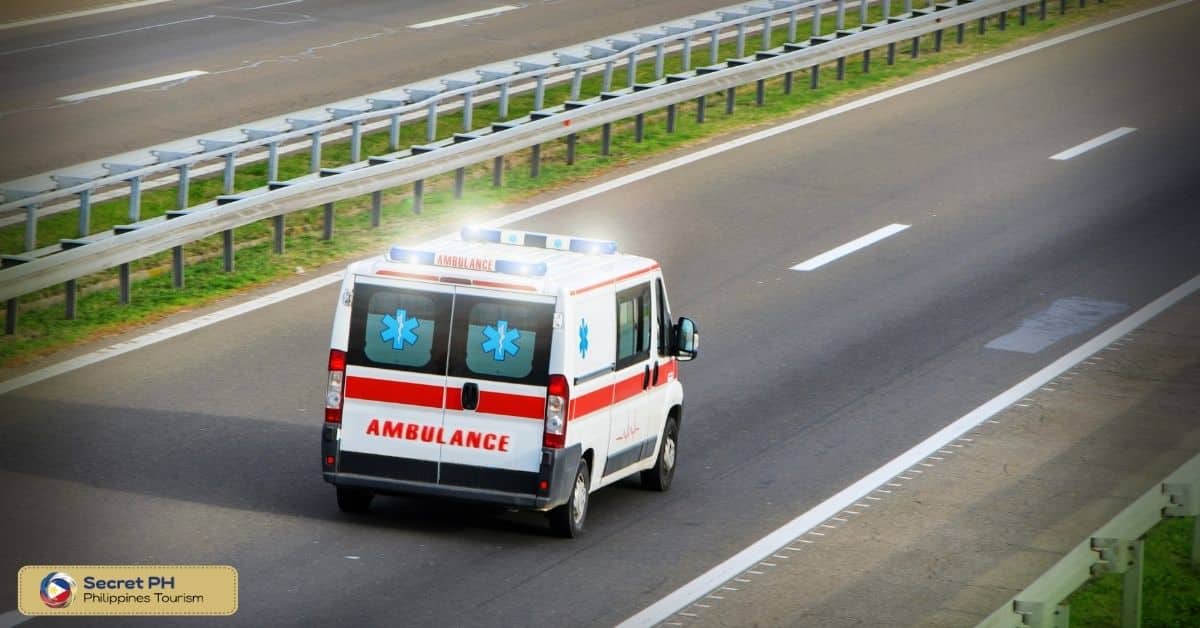
Role of Land Transportation Providers in Emergencies
Land transportation providers play a vital role in emergency response in the Philippines. When natural disasters or other emergencies strike, land transportation providers are responsible for ensuring that essential goods and services are delivered to affected communities. They are also instrumental in the evacuation of affected communities to safe areas.
Here, we will discuss the role of land transportation providers in emergencies.
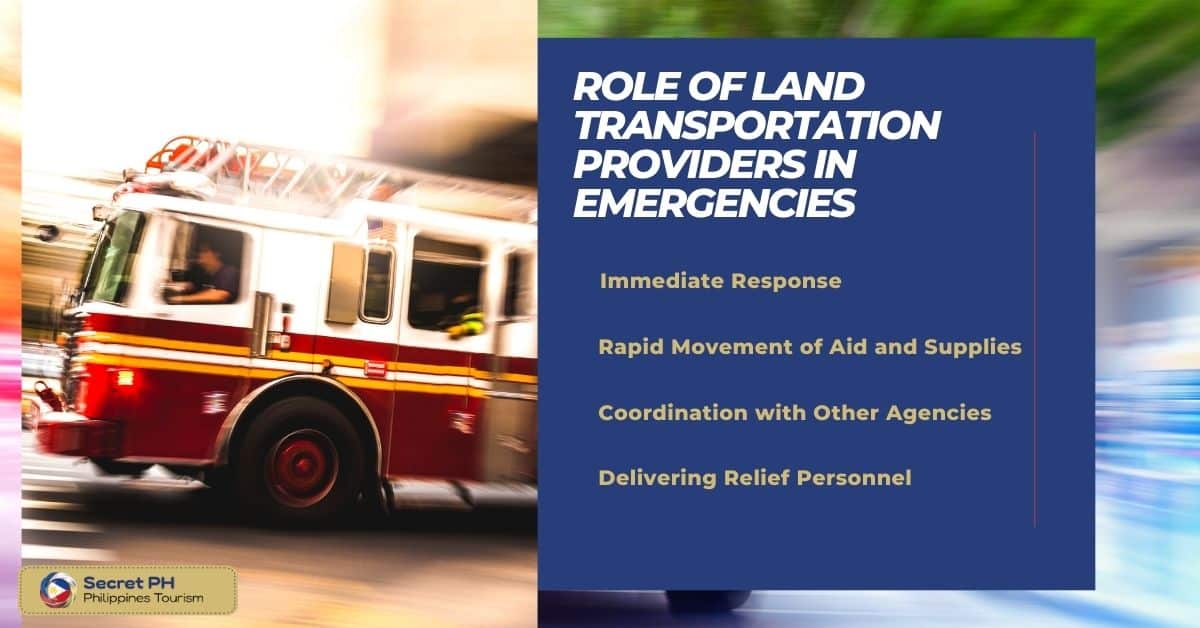
Rapid Deployment of Emergency Services
In emergency situations, land transportation providers play a crucial role in ensuring the rapid deployment of emergency services. This includes the transportation of medical personnel, emergency response teams, and equipment to affected areas. Land transport providers help in moving emergency supplies to hospitals and other medical facilities to provide timely care to those in need.
Evacuation of People and Goods
During natural disasters or other emergencies, land transport providers are responsible for the safe and timely evacuation of affected communities to designated shelters or other secure locations. They transport people and their essential belongings to designated evacuation centers, often risking their own lives to reach those in need.
Delivery of Relief Goods
Land transportation providers also play a crucial role in the delivery of relief goods to affected communities. They transport food, water, medicines, and other essential supplies to disaster-stricken areas, helping to alleviate the suffering of affected people.
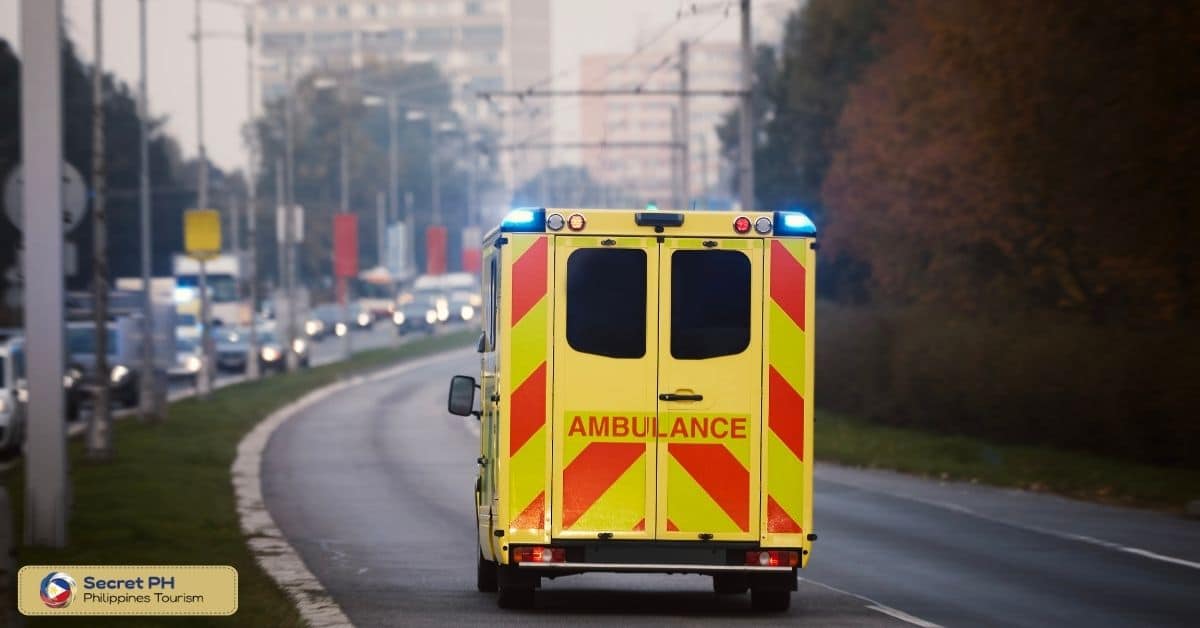
Role of Air Transportation Providers in Emergencies
Air transportation providers also play a crucial role in emergency response in the Philippines. In times of crisis, air transportation providers are responsible for providing swift and efficient transport to affected areas. Here, we will discuss the role of air transportation providers in emergencies.
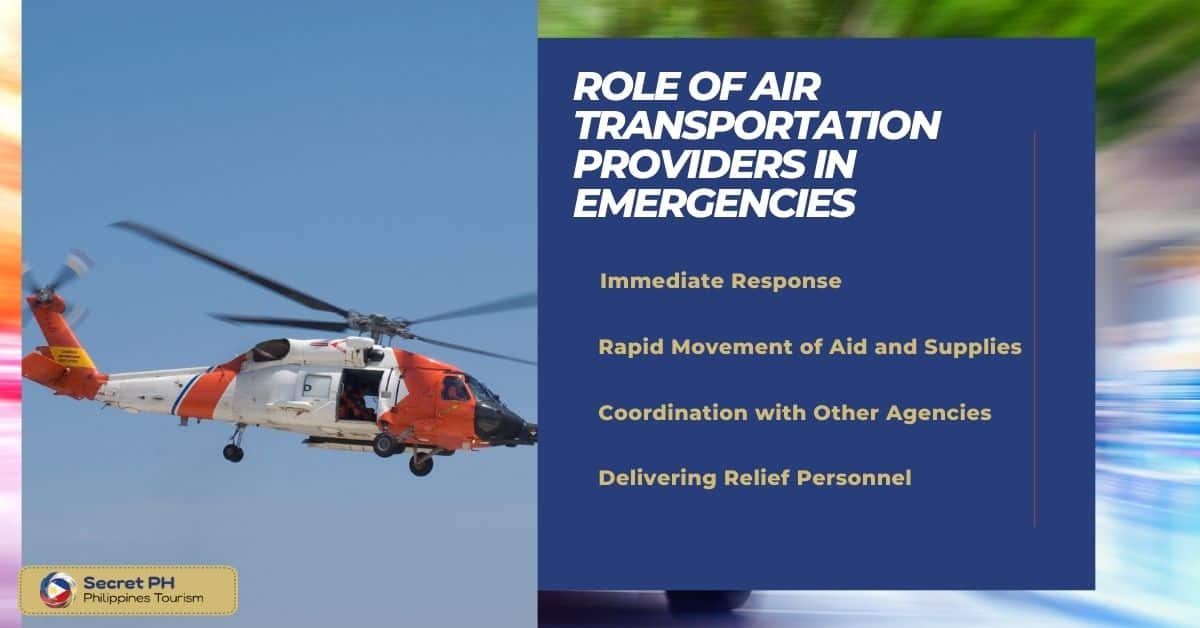
Immediate Response
Air transportation providers are the first to respond during emergencies in the Philippines. They quickly mobilize their resources, including aircraft and personnel, and fly to the affected areas. These air transport providers evacuate victims and transport essential supplies such as food, clean water, and medical supplies.
Rapid Movement of Aid and Supplies
Air transport providers facilitate the rapid movement of aid and supplies to affected areas, particularly those that are difficult to access by road or sea. With their aircraft, they can reach remote and isolated areas, ensuring that aid reaches those who need it most quickly.
Coordination with Other Agencies
Air transportation providers in the Philippines also play a critical role in coordinating the transportation of aid with other agencies on the ground, such as the Red Cross and the military. Through coordination, they can maximize the use of each agency’s capacity and resources, ensuring that aid is distributed efficiently.
Delivering Relief Personnel
Air transport providers in the Philippines also provide the air transportation of personnel with the necessary skills and equipment to assist in emergencies. These include medical personnel, search and rescue teams, and disaster response teams. Air transport providers play a vital role in ensuring that these teams reach disaster areas promptly.

Role of Sea Transportation Providers in Emergencies
Sea transportation providers also play an important role in emergency response in the Philippines. With the country being an archipelago, sea transportation providers are responsible for providing swift and efficient transport to affected areas, especially those that are hard to reach by land or air. Here, we will discuss the role of sea transportation providers in emergencies.
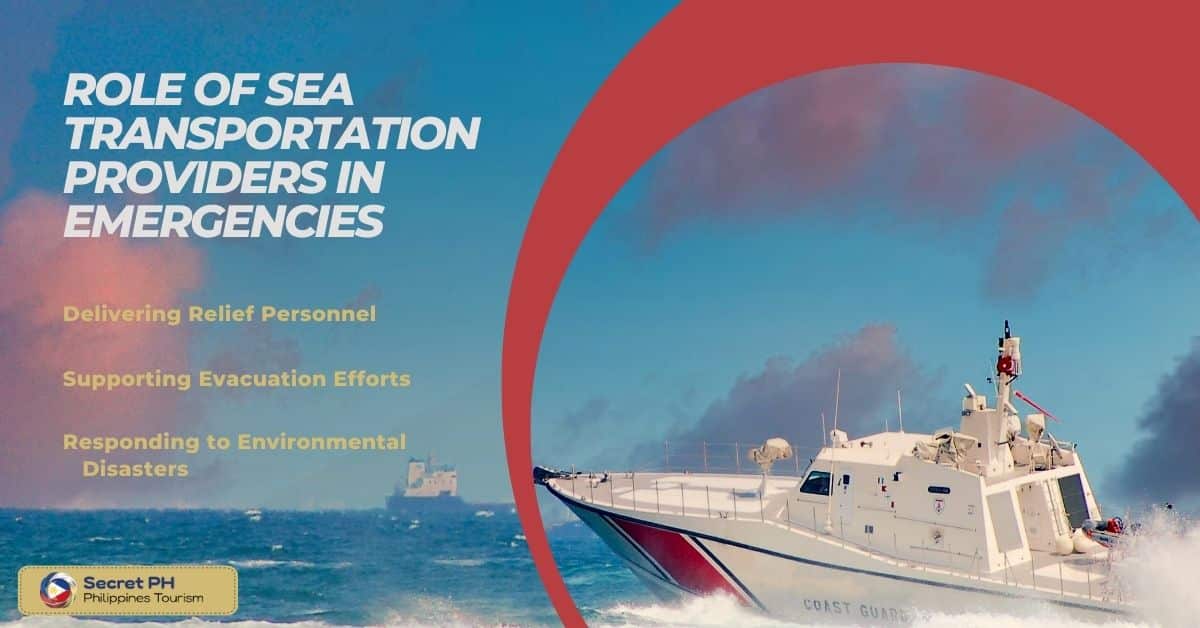
Delivering Aid and Supplies
One of the primary roles of sea transportation providers in emergencies is to deliver aid and supplies to areas that have been affected by disasters. This includes food, water, medical supplies, and equipment to support relief efforts on the ground. Sea transportation providers often work closely with relief organizations and government agencies to coordinate the delivery of these supplies and ensure that they reach their intended destinations as quickly as possible.
Supporting Evacuation Efforts
In addition to delivering aid and supplies, sea transportation providers also play a critical role in evacuating people from disaster-stricken areas. They transport people to safer locations and provide them with the necessary support to ensure their safety and well-being. Sea transportation providers often work alongside other emergency responders, including air transportation providers, to coordinate evacuation efforts and ensure that people are transported to safety as quickly and efficiently as possible.
Responding to Environmental Disasters
Sea transportation providers also respond to environmental disasters, such as oil spills and marine pollution incidents. In these situations, they provide the necessary equipment and personnel to contain the spill and prevent further damage to the environment. They also work closely with government agencies and environmental organizations to develop and implement strategies for cleaning up the affected areas and restoring the ecosystem.
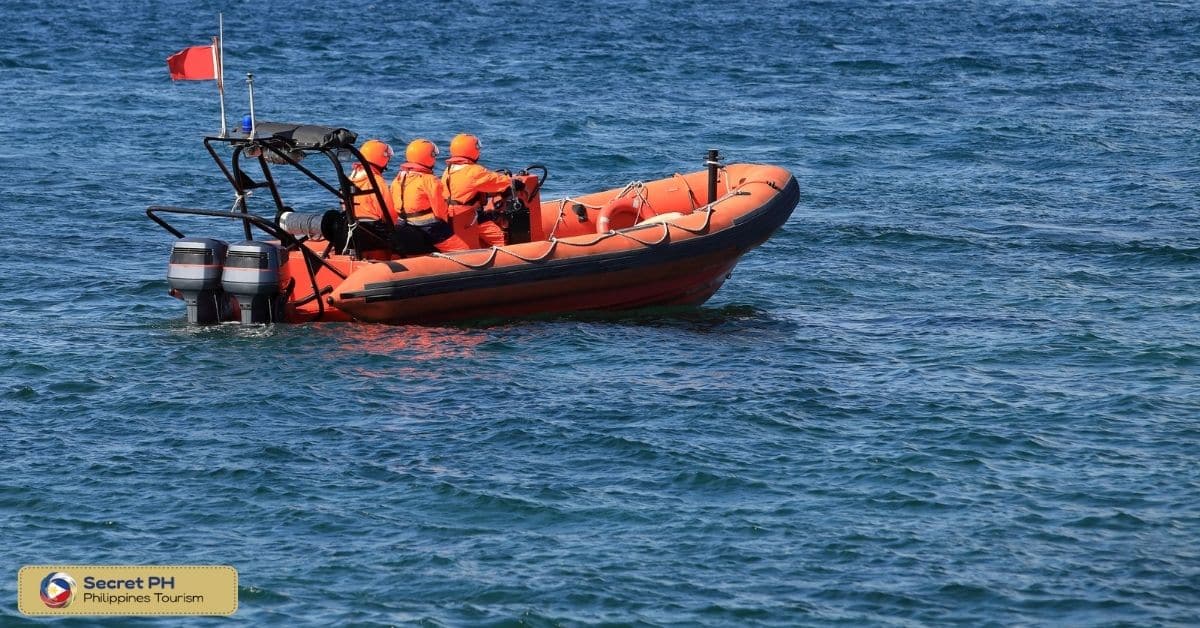
Challenges Faced by Transportation Providers in Emergencies
Transportation providers play a crucial role in emergency response efforts in the Philippines. However, they often face various challenges in providing their services during emergencies. Here, we will discuss some of the challenges faced by transportation providers in emergencies.
1. Access to Affected Areas– During emergencies, transportation providers often face challenges in accessing affected areas. Natural disasters such as landslides, floods, and typhoons can damage roads and bridges, making it difficult for land transportation providers to reach affected communities. Similarly, storms and strong winds can make it dangerous for sea transportation providers to operate. These challenges can result in delayed emergency response efforts and hinder the transport of essential goods and services.
2. Safety and Security Risks– Transportation providers often face safety and security risks during emergencies. For instance, during floods, roads may become impassable, and drivers may have to navigate through deep water, putting their lives at risk. Similarly, sea transportation providers may have to brave strong waves and winds, which can cause accidents and put the safety of passengers and crew at risk. Additionally, transportation providers may face the risk of theft, looting, and violence while transporting essential goods and services during emergencies.
3. Limited Resources– Transportation providers often face limited resources during emergencies. This can include a shortage of vehicles, fuel, and personnel. Limited resources can result in delayed emergency response efforts and hinder the transport of essential goods and services to affected communities.
4. Coordination and Communication– Effective coordination and communication between transportation providers and emergency responders are essential in ensuring swift and efficient emergency response efforts. However, communication systems may be disrupted during emergencies, making it difficult for transportation providers and emergency responders to coordinate their efforts effectively.
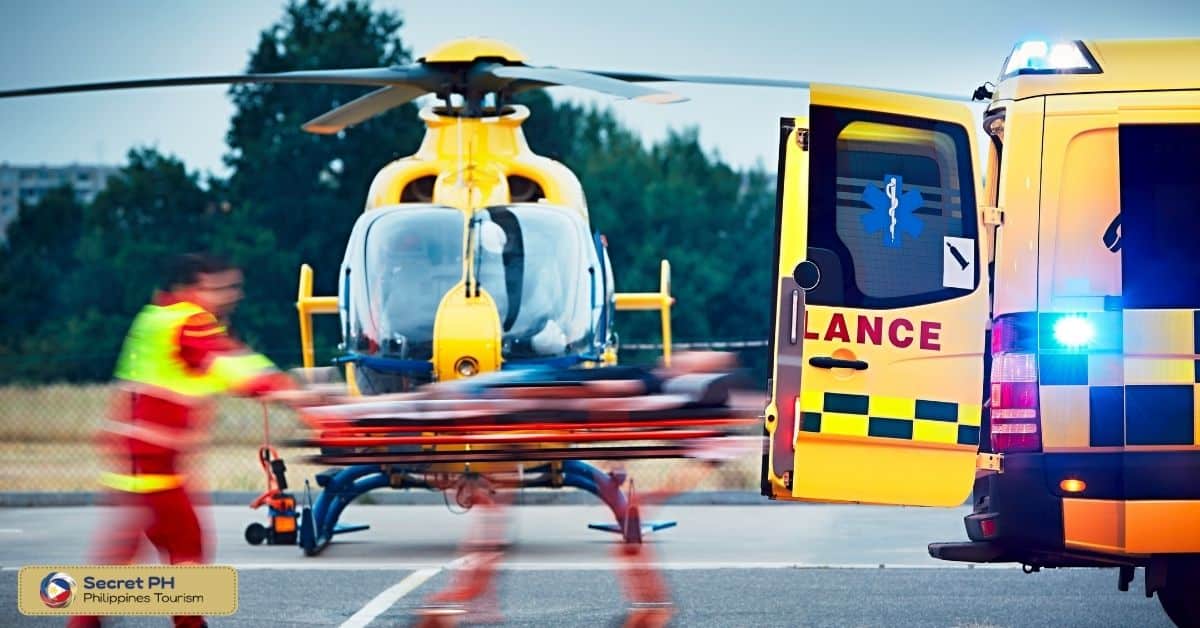
Innovations and Improvements in Transportation for Emergency Response
In recent years, there have been several innovations and improvements in transportation for emergency response in the Philippines. These innovations and improvements aim to address the challenges faced by transportation providers during emergencies and improve the overall efficiency and effectiveness of emergency response efforts.
One of the significant innovations in transportation for emergency response is the use of drones for search and rescue operations. Drones can cover a larger area in a shorter time than traditional search and rescue methods. They can also provide real-time footage of affected areas, enabling emergency responders to assess the situation accurately and make informed decisions.
Other improvements include the use of GPS technology to improve navigation, the development of amphibious vehicles that can operate on land and water, and the installation of emergency communication systems in vehicles to improve communication between transportation providers and emergency responders.
Overall, these innovations and improvements in transportation for emergency response are crucial in ensuring swift and efficient emergency response efforts in the Philippines. As technology continues to advance, it is essential to continue developing and implementing new solutions to address the challenges faced by transportation providers during emergencies.
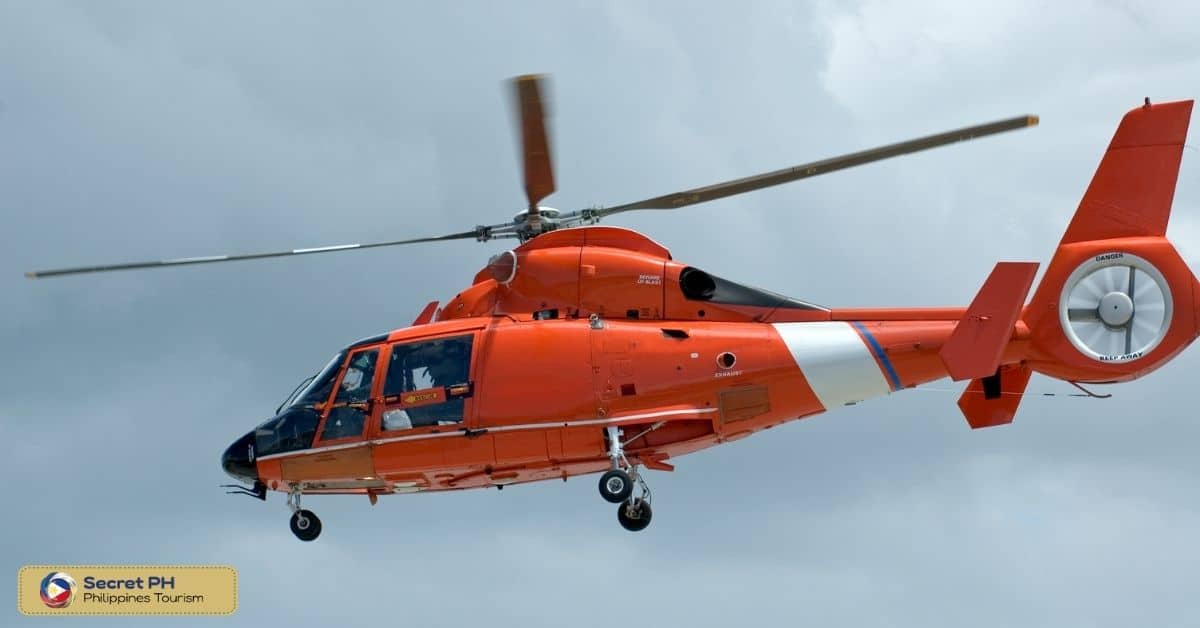
In conclusion
Transportation providers play an essential role in providing aid and support during emergencies. Land, air, and sea transportation providers all have unique roles to play in responding to emergencies quickly, safely, and effectively.
Innovations and improvements in transportation for emergency response are also crucial in ensuring swift and efficient relief efforts. As technology continues to advance, it is essential to continue developing and implementing new solutions to ensure efficient and effective emergency response in the Philippines.



